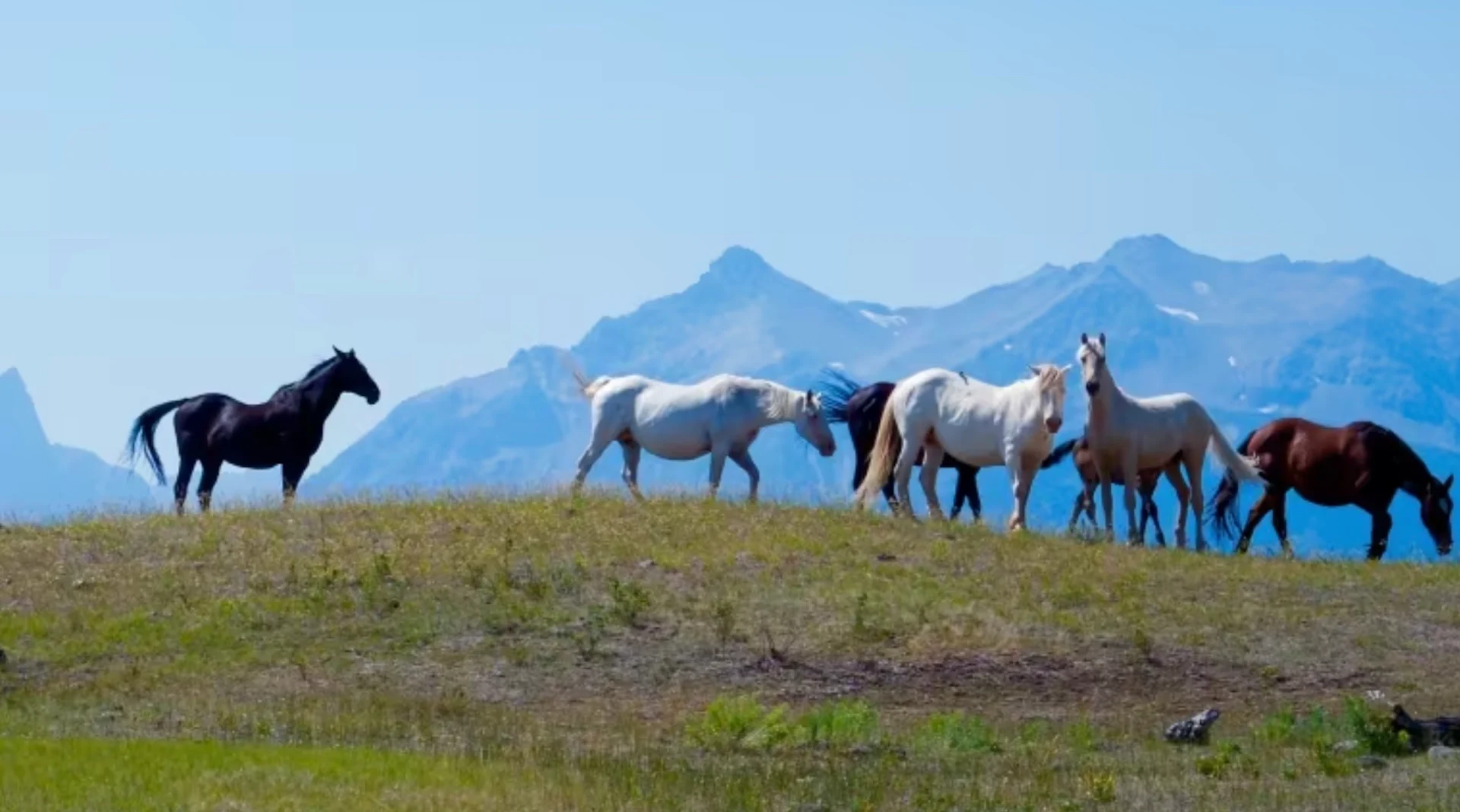
Free-roaming horses are feral and invasive, B.C. says, but some want protection
Wayne McCrory has been fascinated by free-roaming horses since he first began studying them in 2001.
The B.C. biologist quickly learned the animals were an important part of the ecosystem and held cultural significance for local First Nations — even though they are treated by many as "destructive intruders," he told CBC's Radio West.
SEE ALSO: Wild horses of Canada: How they survive harsh weather conditions
McCrory's 20-plus years of research on horses in the Chilcotin plateau — a remote region in west-central B.C. — has now culminated in a book that he hopes will change people's attitudes toward the animals.
The Wild Horses of the Chilcotin: Their History and Future chronicles instances of government-sanctioned culls like the 1896 Wild Horse Act that allowed the shooting of unbranded horses, and the province's bounty offers to encourage shooting of wild horses in the Chilcotin.
The last recorded government cull happened in 1988.
Earlier this year, 17 wild horses were reportedly shot dead in a remote area west of Kamloops, B.C. The investigation into the shootings is ongoing.
An estimated 2,800 horses currently roam free on the Chilcotin plateau.
According to researchers, the horses are controversial because they compete with cattle in open-range land, while the government says they overgraze grasslands and outcompete native species.
WATCH: Wild horses, donkeys are helping desert ecosystems by digging wells
In an emailed statement to the CBC, the Ministry of Water, Land and Resource Management said it does not consider free-roaming horses "wild" but "feral," meaning they are barred from any protection under the Wildlife Act.
"Feral horses are damaging important wildlife habitat such as wetlands and grasslands and are competing for forage with wildlife species important to First Nations, such as moose," it said.
Cultural significance
But McCrory says the Chilcotin horses are not as destructive as the government says.
"They contribute many ecosystem services," he said in an email to CBC.
"They are part of an intact predator-prey ecosystem and are major food of native predators like wolves and mountain lions."
In addition, research has shown that free-roaming horses' moisture-rich dung increases carbon sequestration, which, McCrory says, helps in storing of atmospheric carbon dioxide, thereby reduce greenhouse gas emissions.

Wayne McCrory believes free-roaming horses should be protected by provincial legislation. (Submitted by Harbour Publishing)
The horses also have a rich history of interaction with the Xeni Gwet'in, one of six communities that form the Tŝilhqot'in Nation.
The Xeni Gwet'in, who call the horses qiyus, say they have used them for centuries to travel and carry supplies on hunting and harvesting trips.
Former Xeni Gwet'in chief Jimmy Lulua says the horses are an important part of the nation's culture and livelihood.
"We have had a strong relationship with [them] for a long, long time," he said. "They help us continue our culture of hunting and pass it down to the next generation."
To protect the horses from culls, in 2002 the Xeni Gwet'in established the ?Elegesi Qiyus (Eagle Lake Henry) Wild Horse Preserve in the Brittany Triangle, an area between the Chilko and Taseko rivers. Spanning over 7,700 square kilometres, it is said to be North America's largest preserve for free-roaming horses.
Of the 2,800 free-roaming horses of Chilcotin, about 150-250 of them in the Brittany Triangle are considered to be genetically distinct, with the rest having Iberian ancestry.
Calls for government protection
McCrory's previous studies have shown that the small herds in the plateau show strong ties to the Canadian horse, a unique breed, which suggests the horses there are not invasive or feral.
He says all the horses in the region should be protected by the B.C. and federal governments.
"They are all genetically diverse group of wild horses and each contribute to the grassland health," he said.
Lulua says the B.C. government should classify the free-roaming horses as "wild."
"They live in the wilderness with the bear and moose population and they are hunted by wolves," he said.
In its statement, the ministry said it currently plays no role in the active management of horses, but does support First Nation partners in management efforts, including supporting "sterilization programs and research into wild/feral horse and wildlife interactions."
WATCH: How hundreds of wild horses fared as Fiona rocked Sable Island
Thumbnail courtesy of Daniel Gautreau via CBC.
The story was originally written and published for CBC News. It contains files from Radio West.









